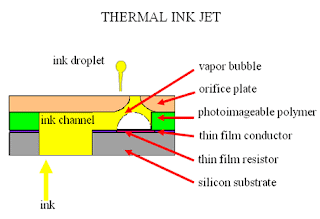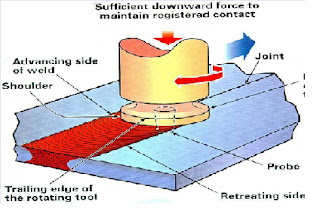Question 1: by Safwan
Research the various business models of consumer products. Describe the typical business model
of the Printer Industry.
Discuss and give your opinion on how the “pirate” refill industry is affecting the printer industry.
Various Business Models Of Consumer Products
· Collective Business Model: Pooling of resources, sharing of information by relatively large numbers of businesses, tradespersons or professionals in the same or related fields of endeavour.
· Loyalty Business Model: Company resources are employed to increase the loyalty of customers and other stakeholders in the expectation that corporate objectives will be met or surpassed.
· Premium Business Model: The concept of offering high end products and services appealing to discriminating consumers. Brand image is an important factor in the premium business model, as quality is often a subjective matter. This model seeks a higher profit margin on a lower sales volume.
· Bricks And Clicks Business Model: The integration of offline (bricks) and online (clicks) presences. For instance, a chain of stores allows the user to order products online, but lets them pick up their order at a local store.
Typical Business Model Of The Printer Industry
Printers are usually sold at prices below their production costs, while ink cartridges are priced dramatically higher than their production costs. This business model is called freebie marketing, where one item is sold at a low price or given a way for free, in order to increase the sale of a complementary good (such as supplies). In an attempt to prevent the use of third-party or refilled ink cartridges, all current inkjet printers have microchips that monitor its usage and remaining ink to the printer. Once the chip reports that the cartridge is empty, the printer stops printing. The cartridge will be indicated to the printer by the microchip to be empty even when the cartridge is refilled, hindering the use of refilled cartridges. This technology has been used by some manufacturers, most notably Epson and Hewlett Packard, to gain more profit by making the chips indicate that the cartridge is empty even though it is not.
How The “Pirate” Refill Industry Is Affecting The Printer Industry
The “pirate” refill industry is causing a loss of revenue in the printer industry due to the printer industry’s reliance on the freebie marketing business model. This is supplemented by the fact that the printer industry gains most of its revenue from the sale of ink cartridges. The use of alternative ink and cartridges has been gaining popularity despite the fact that they produce poor image quality and can even cause damage to the printhead. Furthermore, there are many companies specialising in alternative ink cartridges. As printers come cheap, consumers are willing to use alternative cartridges even though it might cause damage to their printers. As long as the business model of the printer industry does not change, and the “pirate” refill industry is still functioning, the printer industry will continue to suffer from this problem.
Question 2: by Azhagan
Describe how an inkjet printer works
Describe how an inkjet printer works
Inkjet printers contain hundreds of parts all working together to put millions of microscopic dots onto paper. There are five main components of an inkjet printer: print head, paper feeder, circuit board, power supply, and the case. Of these, the print head and paper feeder are the most interesting.
The print head contains an array of microscopic nozzles that fire drops of ink onto the paper. In some cheap printers, the print head is not even part of the printer, but part of the ink cartridge. There are two main types of print head: thermal ("Bubble jet") and piezoelectric.
Thermal print heads have an array of microscopic nozzles with a small heater filament in each one. When a dot needs to be placed on the paper, current is passed through a filament to boil the ink in that nozzle and create a steam bubble. When the bubble pops, ink is shot out the nozzle end while more ink is sucked into the nozzle, ready for the next firing. This process is repeated thousands of times for every page printed. The term "Bubble jet" is actually a brand name owned by Canon, a major printer manufacturer, and is just another name for these inkjets.
Piezoelectric print heads use a special crystal that vibrates when electrified. This vibrating crystal acts like a plunger, pushing ink out of the nozzles and drawing more ink in. The main advantage over the thermal print heads is the larger range of inks they can use. It also allows for higher resolutions because the ink nozzles are closer together. Almost all inkjet printers made today use a piezoelectric print head.
Both types of print head are stabilized by a solid metal bar, and belt driven by a stepper motor. A stepper motor is special type of electric motor that moves in a precise amount for each electrical pulse it receives. As the print head moves back and forth, the printer fires the ink drops at the right time to form the array of dots that make up a printed shape.
The Paper Feeder
The paper feeder consists of the paper tray, pickup rollers, main rollers, and the stepper motors which drive the rollers. The pickup rollers lift a sheet of paper from the tray and move it into the main rollers. These long rollers, along with a fixed guide, keep the sheet align while it is moving. With each pass of the print head, the rollers move the sheet forward a little, until finally ejecting it after printing has finished.
The print quality depends as much on the type of paper as it does on the resolution. Photo paper has a waxy surface that prevents "feathering", which is the spreading out of ink dots as they are absorbed by the paper. It is important to note that, why many printers have high resolutions, low grade paper can never reach these resolutions due to feathering. Uncoated paper has about half the maximum resolution of coated paper.
LINK: http://www.tech-faq.com/how-an-inkjet-printer-works.html
Question 3: by syam
With the aid of photos, describe 2 manufacturing process that was involved in the fabrication of the components
Electrostatic Discharge
One of the manufacturing process involve in the fabrication of the components is the electrostatic discharge (ESD). ESD is a sudden and momentary electric current that flows between two objects at different potentials. Inkjet printer uses ESD to this printing operation. Firstly, ink is passed through the nozzle which separates the ink into tiny droplets. The nozzle uses a piezoelectric crystal to align the droplets. The droplets will then pass through the charging tunnel in which some of the droplets are given an electrostatic charge. As the deflection plates have different charge (i.e. positive charge and negative charge), the droplets will get attracted to one plate and repel another. This means that the deflection plates control the movement of the ink droplets.
Heating
Another manufacturing process that is involved in the fabrication of the product is heating. Heating is the process to increase the temperature of an object. Inside the print cartridge, there is a series of tiny chambers. An ultra-fine nozzle is connected to a reservoir of ink. There is a small heating element inside the nozzle. When the current flows through the heating element, it causes a rapid vaporisation of the ink, in the nozzle to form a bubble. This cause a tiny drop of ink to eject at a high speed onto the paper. The heating element is switch off and on in response to the data from the computer.
Question 4: by Deng Jie
With the aid of photos, pictures or diagrams, identify 2 mechanisms and describe their working principle.
An inkjet printer consists of many components. However the heart of an inkjet printer is the ink cartridge which most of the printing process is done by it. An ink cartridge has a chip which builds of silicon a nozzle with many small holes is attach to it. Upon receive the printing task the nozzle eject a tiny droplet to the paper, to eject a droplet from each chamber, a pulse of current is passed through the heating element causing a rapid vaporization of the ink in the chamber to form a bubble, which causes a large pressure increase, propelling a droplet of ink onto the paper.
Paper feeding unit is also very important to a printer. This unit consist many parts one of them is the roller which pull the paper in from the tray and deliver to the print head. The other one is the paper feed step motor. This stepper motor power the rollers to move the paper in the exact increment needed to ensure a continuous image is printed.
Question 5: by Syam
5) With the aid of photos, pictures or diagrams, Identify and describe the working principles of 1 of the sensors in the printer.
Ink Sensors
Ink level sensors are indicators which tell us the amount of ink left in the ink cartridge. At the side of the ink cartridge, there is a microchip placed there. Microchip is a miniature circuits consisting of a semi conductive devices and other electronic components. The microchip measure the amount of ink dispensed. On the other hand, the sensors use this amount to estimate the amount of ink left in the cartridge. Once the sensor determines that the ink cartridge is empty, it will send a signal to tell the user that there is no ink left in the cartridge.















































